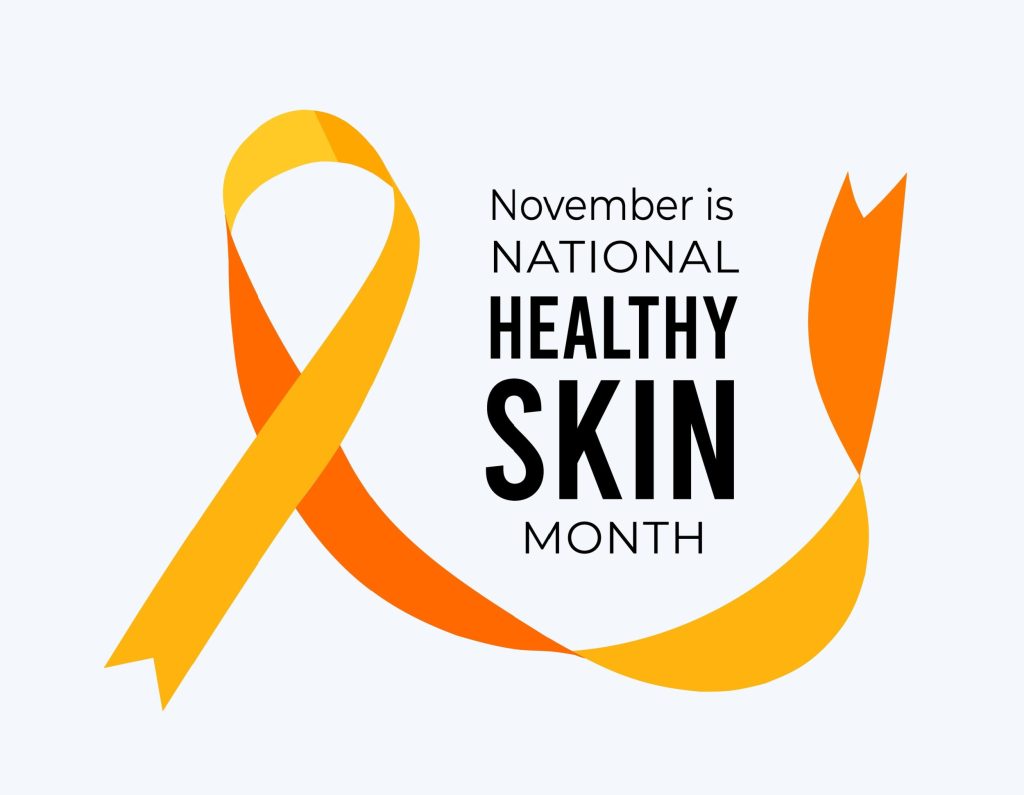
Most of us have noticed it – when someone is pregnant, they seemingly have a glow about them. Believe it or not, the “pregnancy glow” is actually a real skin condition! While the body is nurturing and growing a baby, it produces nearly 50% more blood volume to support new life. This results in increased blood circulation, which is responsible for the “glow” of pregnancy.
Your entire body undergoes massive changes during the nine months you carry your baby. And, unfortunately, outside of the glow, pregnancy comes with a few unpleasant and uncomfortable skin conditions. The good news is that most pregnancy-related skin issues resolve post-birth.
Here’s how to recognize the most common skin changes when they appear:
- Hyperpigmentation: Hormones are responsible for areas of hyperpigmentation during pregnancy. The flow of pregnancy hormones leads to an increase in the production of melanin, which is the dark brown/black pigment responsible for causing skin to darken when it is exposed to UV radiation. During pregnancy, try to limit direct sun exposure as much as possible. If you are going to be outside, stack your sun protection by layering sunscreen and following up with dressing in a long-sleeved, lightweight shirt and long pants with built-in UPF protection. Additionally, if you can, seek shade especially during the hours of 10 a.m. and 4 p.m.
Hyperpigmentation can take many forms:
- Melasma: The aptly named “mask of pregnancy” is characterized by brown or gray-brown patches that appear on the face, nose, cheeks, and forehead.
- Linea Nigra: Also called the “pregnancy line,” linea nigra (Latin for “black line”) presents as the dark line that runs vertically from the belly down to the pubic area. The line itself is called the linea alba (Latin for “white line”), and you’ve always had it. While the linea alba blends into your belly and pelvis during normal times, pregnancy hormones can darken the line and render it visible.
- Darkened spots: During pregnancy, skin all over your body can darken. You may notice hyperpigmentation in freckles, moles, scars, breasts, birthmarks, and genitalia. It also commonly appears in areas of friction, such as the armpits, groin, and inner thighs.
- Skin rashes: Itchy pregnancy rashes are common, especially during the second and third trimesters when skin is the most stretched. To reduce itchiness and discomfort, your doctor may prescribe a topical steroid cream or oral antihistamine for a rash. At home, use moisturizers, cool compresses, or soothing oatmeal baths to ease itchy, irritated skin.
- Pruritic urticarial papules and plaques of pregnancy (PUPP): PUPP is the most common type of pregnancy rash. It develops first on the abdomen, and typically surfaces at the end of pregnancy when the belly is most stretched. PUPP appears as pale, red, itchy bumps on the belly and around stretch marks. The rash can progress to the arms, legs, breasts, and buttocks and it may itch, burn, and/or sting.
- Prurigo of pregnancy: While less common than PUPP, prurigo of pregnancy is an itchy rash that presents with tiny clusters of bumps on the arms, legs, and torso. Prurigo of pregnancy is sometimes referred to as atopic dermatitis of pregnancy or papular dermatitis of pregnancy.
- Pemphigoid gestationis: Pemphigoid gestationis is a rare pregnancy-associated skin condition characterized by an itchy rash that begins on the abdomen and then spreads to the arms, legs, back, and buttocks. Gradually, the rash develops into large, fluid-filled blisters. Pemphigoid gestationis is an autoimmune skin disorder triggered during pregnancy.
- Stretch marks: As pregnancy progresses it’s natural to watch stretch marks make their slow migration over the belly as the skin stretches to its fullest scope. These marks will be reddish-purple streaks during pregnancy and may also develop on the buttocks, breasts, and thighs. While stretch marks will fade into a duller silver or white color post-pregnancy, they will never fully disappear.
You can try to prevent stretch marks by keeping your skin well-moisturized during pregnancy; look for creams and lotions with soothing, hydrating ingredients like shea, cocoa, and coconut. Despite good skin care, stretch marks may not be entirely preventable, because outside of physical strain, hormonal and hereditary factors also determine their appearance.
- Varicose veins: Varicose veins are the prominent red or blue veins that protrude from the ankles, legs, or behind the knees. They develop when the vein valves designed to push blood upwards towards the heart weaken. During pregnancy, hormonal imbalances can cause vein valves to weaken.
Additionally, the full weight of the uterus on the thighs prevents blood from easily reaching the heart. Try to limit long periods of sitting or standing and elevate legs while sitting. Exercise regularly to keep fresh blood pumping. If the unsightly veins do not recede post-pregnancy, there are several varicose vein treatments available.
- Acne: During pregnancy, hormone fluctuations can lead new adult acne to develop or cause existing acne to worsen. During this time, oil glands are naturally excreting more oil, which can increase the chance of breakouts over areas like the face, chest, and back.
Talk with your doctor about which treatment methods are safe to use – while most over-the-counter topical solutions are safe to use, treatment methods involving hormone therapy, retinol, and tetracyclines could be dangerous for the unborn baby.
- Skin tags: Skin tags are more likely to develop on the chest, back, neck, breasts, armpits, and groin during pregnancy, and while the appearance of these soft, hanging skin growths is thought to be hormonally related, the exact cause of proliferation is unknown. Skin tags are harmless, but can easily be removed by your dermatologist in a simple procedure after you are no longer pregnant.
- Cholestasis of pregnancy: While the skin conditions listed above may be uncomfortable or irritating, they are non-threatening to your health and your baby’s – however, cholestasis of pregnancy carries with it an increased risk of pre-term delivery, and expectant mothers in the third trimester should be alert for signs of the disease.
Cholestasis of pregnancy is a liver disease; during pregnancy, high amounts of hormones can affect the normal flow of bile in the gallbladder. Symptoms of this condition include severe itching, especially on the soles and palms of feet and hands, and jaundice (yellowing of skin). Once detected, your doctor can prescribe oral medications to treat the condition.
At Florida Dermatology and Skin Care Centers, we know that experiencing unexpected changes in your skin can be concerning when the health of your unborn baby is your number one priority. Let our team of licensed dermatology specialists put your mind at ease. Our professionals are experts in the field of hair, nail, and skin conditions, and will be able to walk you through skin changes during pregnancy, as well as safe treatment options. Don’t let uncomfortable skin issues damper your glow! Contact one of our office locations today and schedule a consultation.
FLDSCC Can Help You with Your Skin Concerns
FLDSCC’s team of providers are experts in diagnosing and treating skin cancers; skin conditions and diseases such as eczema, rosacea, dry skin, rashes, and warts; and chronic skin diseases and infections, while simultaneously tackling aging skin, wound care, and a multitude of other skin, hair, and nail concerns.
Several FLDSCC providers are fellowship-trained in Mohs micrographic surgery, an effective state-of-the-art treatment for most types of skin cancers. Mohs surgery involves minimal discomfort and encourages the greatest preservation of healthy tissue, which means less risk of scarring and superior cosmetic results.
FLDSCC has many convenient locations throughout the state. For more information, visit www.fldscc.com, or call (855) FLD-SKIN.


